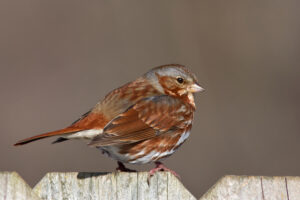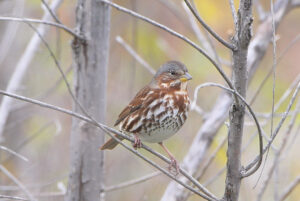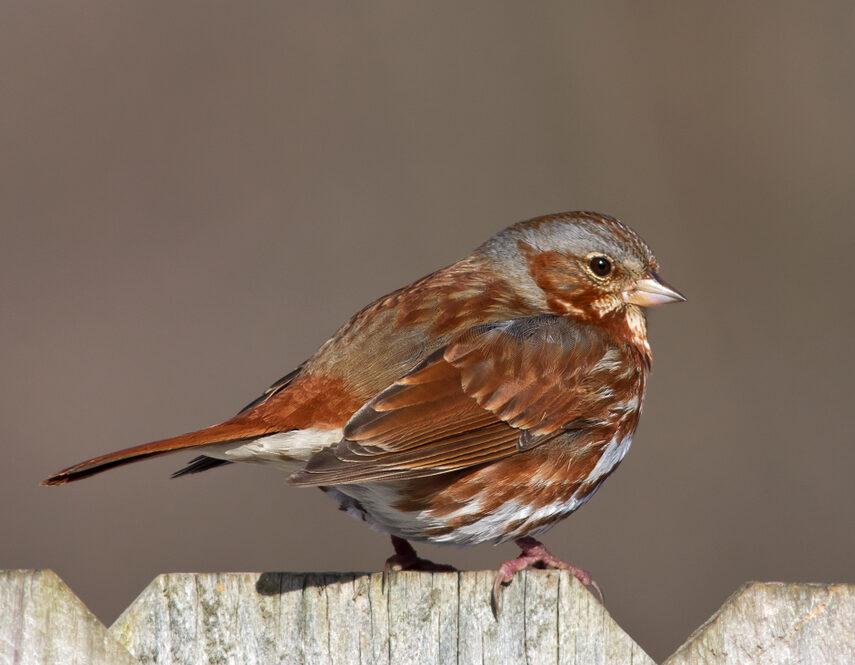Fox Sparrow, Passerella iliaca
Bill Rowe
By way of convincing you that sparrows are well worth your attention, here is one of the most eye-catching and readily identified of the 21 or so species that occur in Missouri each year (the phrase “each year” eliminates a few rarities). The Fox Sparrow, like some of our other sparrows, is a bird we don’t see in the summer; its nesting grounds are in Canada, where it lives in dense thickets around wetlands. Come fall, it is one of the scores of birds that pass through the Midwest on their way to the southeastern U.S., though some of them are hardy enough to stay with us for a Missouri winter—more in the southern counties, fewer in the northern ones. These wintering Fox Sparrows are just uncommon enough to be a treat whenever you find them; their preference is for woodland edges and openings, often with thick brush and vine tangles for cover, in the company of White-throated and other sparrows. They like a mixed diet of seeds and berries of all sorts, plus some insects and other small life, and they will search the ground for food by scratching in the leaves with both feet, like a towhee. As one of the most variable sparrows on our continent, this bird has been the subject of intensive work by ornithologists, who have described 18 subspecies that cluster in four main groups: our eastern “Red” Fox Sparrow, the “Slate-colored” form of the Rockies, the “Thick-billed” form of the California mountains, and the almost unicolored “Sooty” form of coastal Alaska and British Columbia. These four forms do interbreed to some extent where their ranges meet, but they are different enough that they may possibly qualify as full species one of these days.
IDENTIFICATION: A large, stout sparrow that is patterned in gray and rufous on the head and back, with heavy reddish streaks and spots below and a strongly reddish rump and tail—colors that especially stand out in snow. As with all our native sparrows (except juncos), the male and female look alike. By late winter, Fox Sparrows begin to practice their song—loud and sweet with some slurred notes—which helps you locate more of them, as does their common call, a sharp smacking tsk, like clucking your tongue.
ST. LOUIS STATUS: Can be very numerous some days in March and April and again in October and November; in winter, widespread but generally in small numbers. May visit feeders at times.
Learn more and listen to the songs and calls of Fox Sparrows here.


Notice red rump and tail
Slate-colored form; could visit Missouri from the west
Photo Credit: © Darren Clark, Macaulay Library; Cornell Lab of Ornithology




